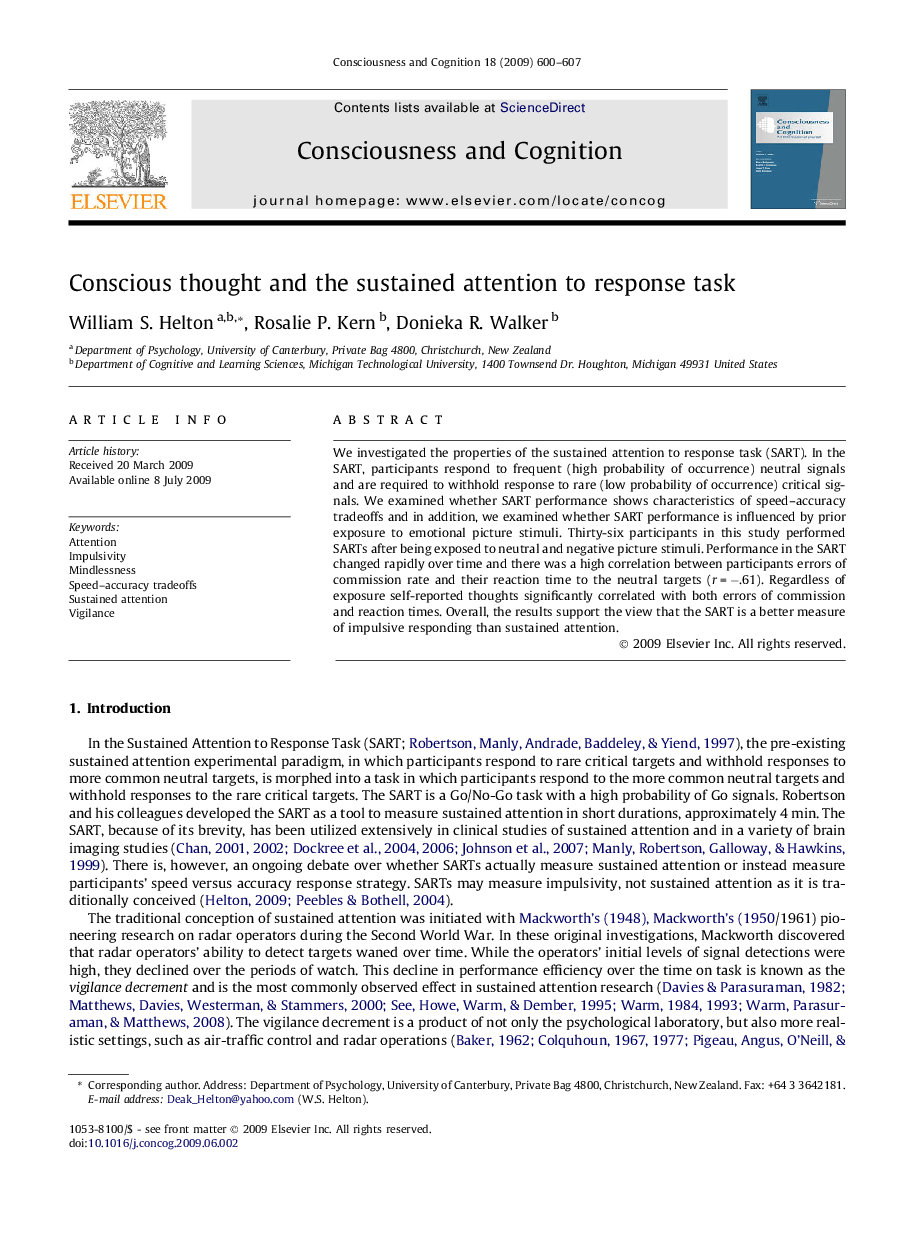| کد مقاله | کد نشریه | سال انتشار | مقاله انگلیسی | نسخه تمام متن |
|---|---|---|---|---|
| 927890 | 922281 | 2009 | 8 صفحه PDF | دانلود رایگان |

We investigated the properties of the sustained attention to response task (SART). In the SART, participants respond to frequent (high probability of occurrence) neutral signals and are required to withhold response to rare (low probability of occurrence) critical signals. We examined whether SART performance shows characteristics of speed–accuracy tradeoffs and in addition, we examined whether SART performance is influenced by prior exposure to emotional picture stimuli. Thirty-six participants in this study performed SARTs after being exposed to neutral and negative picture stimuli. Performance in the SART changed rapidly over time and there was a high correlation between participants errors of commission rate and their reaction time to the neutral targets (r = −.61). Regardless of exposure self-reported thoughts significantly correlated with both errors of commission and reaction times. Overall, the results support the view that the SART is a better measure of impulsive responding than sustained attention.
Journal: Consciousness and Cognition - Volume 18, Issue 3, September 2009, Pages 600–607